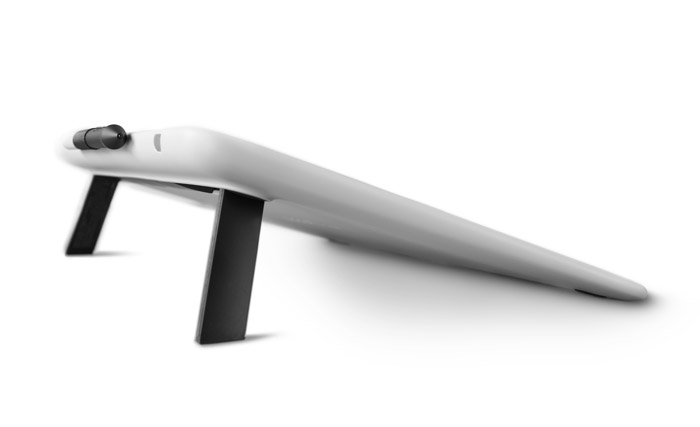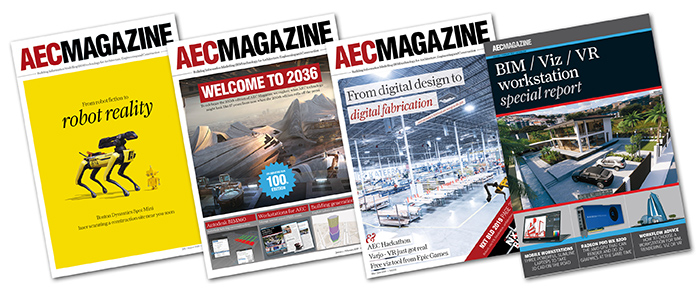Wacom’s Cintiq products have been the de facto standard for pen-based workstation input for decades – but can the Japanese master continue to dominate at a lower price point? Al Dean takes a look at the Wacom One
Most of us learn to use pens and pencils at an early age, so it feels natural to use pen-based input in combination with computing devices. The history of pen-based input technologies stretches back several decades, from tablet-and-digitiser sets for early CAD systems, to today’s more nifty devices for advanced mobile tablets and computing devices, via 1970s pop-rocker Todd Rundgren’s Utopia Graphics Tablet System. (Seriously, Google it).
Japan-based Wacom has been a vocal champion and promoter of the pen/device combination since the mid-1980s and, more specifically, its electromagnetic resonance (EMR) technology which powers its pens so they never need charging or batteries – ever.
Wacom’s products initially focused on drawing tablets and pens/mice. But more recently the company has taken advantage of widely available touchscreen technology, which has delivered its Cintiq products.
The Cintiq range has proven popular with architects for sketching. There are many others who might also benefit, but for whom the associated costs are harder to justify, especially if only used on occasion for tasks like redlining or markup. This is where the recently released Wacom One comes into play.
A no-frills tablet
The Wacom One follows the same concept as the Cintiq – an LCD screen with penbased interactivity. The product is built around a 13-inch display running at standard HD resolution (1,920 x 1,080 pixels). It connects to your workstation, your Mac or your Android tablet / phone by means of a USB cable, enabling that device to mirror or extend your display.
Power is pulled from a separate adapter that can either be plugged directly into the mains or via a USB hub. One thing to note here is that the USB-C connect on the back of the unit is unidirectional only, due to the shape of the socket recess and the plug, which may disappoint some users.
To switch the unit on, you’ll find a power button at the back, along with two snap-out legs that prop up the display at 19 degrees.
The all-important pen The pen supplied with the system is pretty standard, featuring the replaceable tip for which Wacom is known (spares are stored underneath one of the legs).
There’s a single button on the pen, with which to activate your right-click menus. If you’re an existing Wacom user, you’ll immediately notice that there’s no eraser on the other end of your pen. This is just one example of an area where Wacom has pared down the product in order to strip out costs and thus make it more affordable for customers.
As previously mentioned, one of Wacom’s core technologies is the EMR powering of its pens, which means no batteries or charging, but others include pressure sensitivity (4,096 levels) and tilt sensing (up to 60 degrees).
What’s interesting about Wacom One is that, for the first time, the company is also supporting EMR-powered pens from other vendors. A number of different models are already available. While we also tried out the Staedtler Norris Digital (designed to resemble the company’s iconic yellow and black Norris pencils), the one we really loved was the Safari EMR from Lamy, which looks and feels like one of Lamy’s Safari fountain pens, but is actually a stylus.
The big question is how does the Wacom One differ from Wacom’s entry-level Cintiq 13HD product? The answer is that there’s been a cost-reduction effort across the board. While the Wacom One display offers the same resolution, there’s lower pressure sensitivity, lower tracking speed and lower pen resolution. Other features have been stripped away, so there’s only one button on the pen and no eraser tip. On the main body of the tablet, there are no shortcut keys. This may not matter to many users, but it’s important to note.
In use, the device is responsive. Depending on your applications, the pressure sensitivity works just as you would expect. While Wacom One doesn’t quite match the all-singing, alldancing Cintiq, it is a perfectly usable display and drawing tablet. The 13-inch display is crisp and sharp and the drawing surface has just the right amount of friction, particularly when compared to using a stylus on the glass surface of an iPad or similar tablet.

Conclusion
So what are the sweet spots for the Wacom One? Cost is the first. This product is a lot cheaper than the entry-level Cintiq, but will still give you the functionality you need. If you travel a lot, its compact size and light weight will make it a good companion for your mobile workstation (and it’ll provide a handy second display, too).
If you’re just looking to add a little more interactivity to your computing work, then it’s also a solid option. And it’ll be a dream for those in search of a more direct way of redlining and marking up digital documents, enabling them to start taking advantage of the pen-based input options that CAD vendors have recently been adding to their system.
Price $400
If you enjoyed this article, subscribe to our email newsletter or print / PDF magazine for FREE







